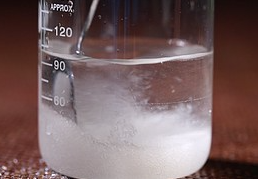Introduction: Hydroxypropyl Methylcellulose (HPMC) is a versatile ingredient widely used in the confectionery industry to improve the texture, appearance, and overall quality of candies. In this article, we’ll explore the various applications of HPMC in candy production and its role in creating delightful treats enjoyed by consumers worldwide.
- Texture Modification: One of the primary functions of HPMC in candy making is texture modification. By adjusting the viscosity and gelation properties of candy formulations, HPMC enables manufacturers to achieve desired textures, ranging from soft and chewy to firm and gummy candies.
- Moisture Retention: HPMC acts as a humectant, helping candies retain moisture and preventing them from becoming dry or hard over time. This attribute is particularly beneficial in candies with high sugar content, where moisture retention is essential for maintaining freshness and prolonging shelf life.
- Film-Forming Properties: HPMC possesses film-forming properties that are valuable in the production of coated candies and confectionery products. When applied as a coating agent, HPMC creates a thin, protective layer that enhances the appearance, gloss, and shelf stability of candies, while also providing a barrier against moisture and external contaminants.
- Sugar Replacement: In response to growing consumer demand for reduced-sugar or sugar-free options, HPMC can serve as a partial or complete replacement for sugar in candy formulations. By contributing to bulk and texture without adding sweetness, HPMC enables manufacturers to create low-sugar or sugar-free candies that still deliver a satisfying eating experience.
- Stability in Processing: HPMC enhances the stability of candy formulations during processing, particularly in high-temperature applications such as cooking, extrusion, and molding. Its ability to withstand heat and maintain structural integrity ensures consistent quality and uniformity in the final product, even under challenging processing conditions.
- Dosage and Application: When incorporating HPMC into candy recipes, manufacturers must carefully consider factors such as dosage, hydration, and processing parameters to achieve optimal results. Proper dispersion and hydration of HPMC are critical to ensure uniform distribution and maximize its functional benefits in candy production.
Conclusion: In conclusion, HPMC is a valuable ingredient in candy production, offering a range of benefits that contribute to texture modification, moisture retention, stability, and sugar reduction. Whether used in traditional candies, coated confections, or sugar-free treats, HPMC enables manufacturers to innovate and create high-quality products that delight consumers with their taste, texture, and appearance.


